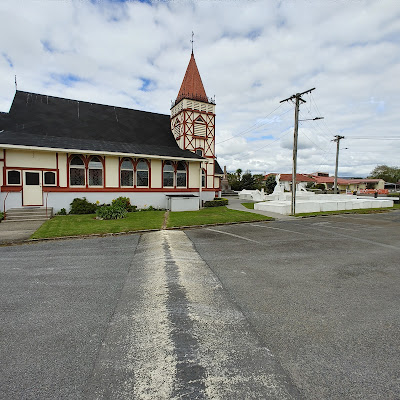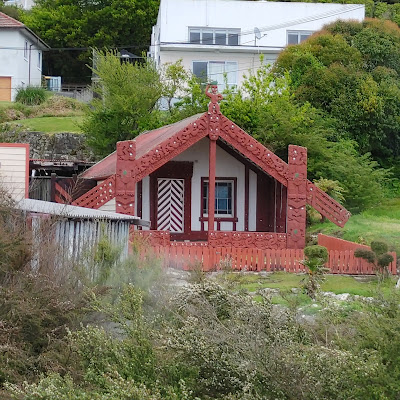 |
| So active that new vents pop up all the time. This one, in the parking lot, had just been filled. |
 |
| This is a community steam oven. You open a valve for steam to enter the oven. A lady showed us the bread she had just finished baking in the oven. Her pan was a metal coffee can. |
 |
| Steam tank for letting the pressure build. |
 |
| The Anglican Church - St Faith's |
 |
| There are also crypts in front of the church. |
 |
| Since our guide was a member of the church, he was allowed to unlock it and show us the interior. |
 |
| Our guide told us some of the meanings behind the windows and carvings. |
 |
| Also the meanings relayed in the wall patterns. |
 |
| Image of Jesus wearing a Māori cloak placed so that he appears to walk across the surface of Lake Rotorua |
 |
| I don't remember the names of their ancestors that founded the village, but the guide told us some of the legends. |
 |
| The village is home to a magnificent traditional Māori meeting house named Tamatekapua. |
 |
| The carvings on the house are exquisite and highlighted by hundreds of inlaid shiny paua shells. |
 |
| Whakaturia = the dining hall |


















No comments:
Post a Comment